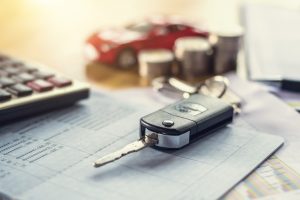Used car check – Buying a car made easy
You are looking for a good used car, but you don't know anything about cars. What should I put attention on? Is the price justified or too high? Should I rather buy from a dealer or can it also be a private individual?
In the background there is always the fear of buying a car with sometimes serious defects at an overpriced price and, in the worst case, being left with the repair costs.
Even if you decide to buy from a dealer and even know the seller or consider him to be serious, he may not even know about defects, manipulations or previous damage to the vehicle. Accordingly, we advise you to follow the principle "trust is good, control is better" when buying a used car.
First and foremost, when buying a used car, it is about the condition of the vehicle and the price of the vehicle. The selling price is based on the current condition of the vehicle. This is where the problem lies for a non-specialist, because they are usually only able to examine the vehicle superficially and can only detect defects to a limited extent.
In the following we will explain to you which points are important for a used car check:
Viewing
You should always go to a viewing in pairs, ideally with an expert. The vehicle should be easily accessible from all sides during the inspection and should be inspected in daylight and dry weather. Wet vehicles make it difficult to see repaired or repaired areas. Particular attention should be paid to the area of the wheel arches and the side skirts, especially in the area of the jacking point. Rust spots are often found there.
A musty smell or wet floor mats indicate moisture in the interior. You should also not forget to look under the vehicle or on the ground to be able to identify oil or petrol stains that indicate serious defects.
In general, it is recommended to conduct an internet search for typical weak points of the respective vehicle model before the inspection.
Accidental damage
Accident damage is often concealed or covered up, since the vehicle loses considerably in value as a result of an accident and an accident-free vehicle is therefore easier to sell. It becomes suspicious when there are uneven gaps between individual components. If, for example, the distances between the bumper and fenders are different on both sides, this indicates that the bodywork has probably been warped as a result of accidental damage. Well-repaired paint damage is usually not recognizable for a non-specialist, so you should use a paint thickness measuring device to be able to prove repaired areas on the vehicle. Professional expertise is also recommended in order to be able to take a close look at all vehicle parts from the body, tires, windows, underbody, shock absorbers, engine compartment to the transmission and brake systems. Special diagnostic tools are also used to detect defects under the bodywork or in the now very complex on-board electronics, which non-experts cannot use.
Functions and interior
The most important electronic functions such as lighting, air conditioning, electric exterior mirrors, seat heating or radio/navigation should be tested. You should invest a lot of time in this for newer vehicle models, since undetected defects in the electronics can become very expensive afterwards. A heavily worn steering wheel, worn seats or pedal rubber indicate a very high mileage. This should therefore make you suspicious if the mileage is low and could indicate a manipulated speedometer.
Engine compartment
An engine that is too clean should also make you suspicious, because with an engine wash the seller could have eliminated leaks and thus traces of leaked fluids. Hoses and seals should be dry and not brittle. Cloudy coolant indicates a defective cylinder head gasket. Furthermore, you should open the oil filler cap and look for mud or dirt. Check for slime marks. This could also indicate a defect or frequent short trips.
Test drive
The engine should start immediately. When the ignition is switched on, the indicator lights in the cockpit (ABS, ESP, airbags) must light up and go out when the engine starts. A sluggish circuit, strong vibrations and jerks indicate drive problems. Some defects such as a distorted track, a worn steering or defective shock absorbers only become noticeable at high driving speeds, when the vehicle pulls to the side or corners poorly. Therefore, also drive outside of a town or federal motorway, shift through all gears up and back. A non-specialist often has inhibitions about driving someone else's vehicle at high speed and driving manoeuvres.
Vehicle papers
Service booklet, proof of repairs and test reports from the HU create trust and, if available, also allow the mileage to be checked. Many previous owners can be an indication of the vehicle's susceptibility to breakdowns.
If you need support with the used car check, we are at your disposal with our expertise and accompany you during the purchase process!




